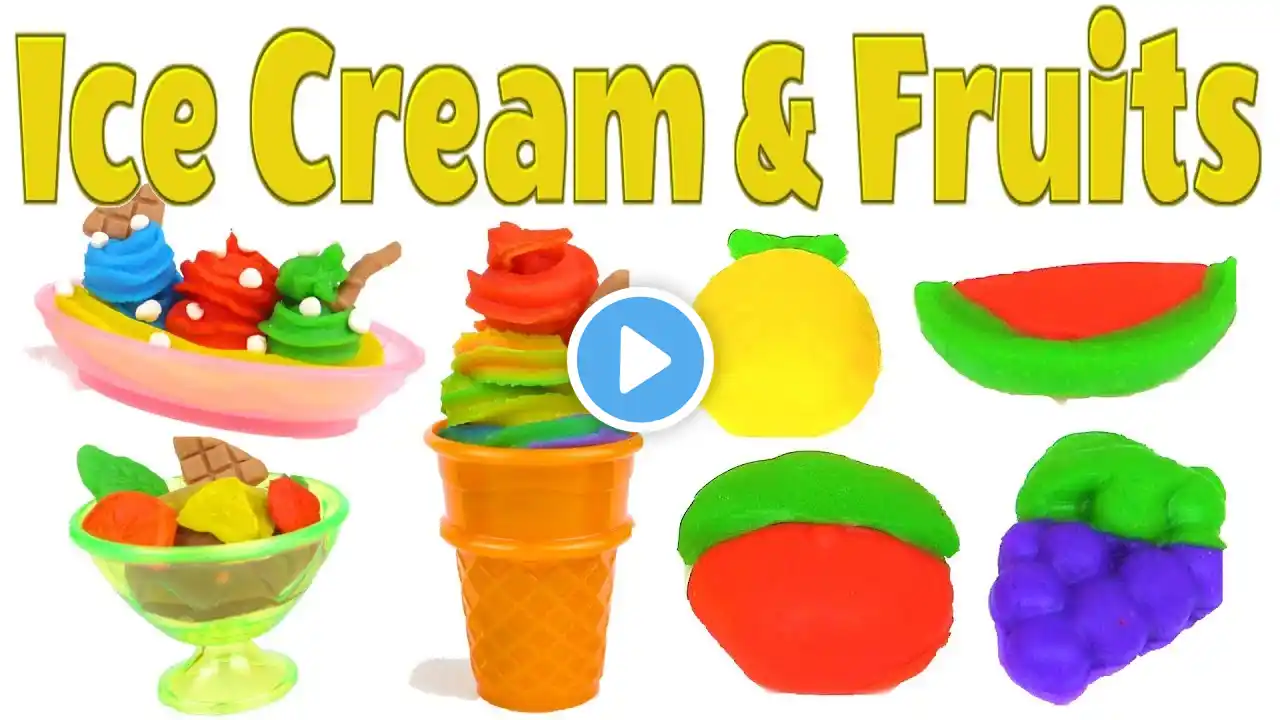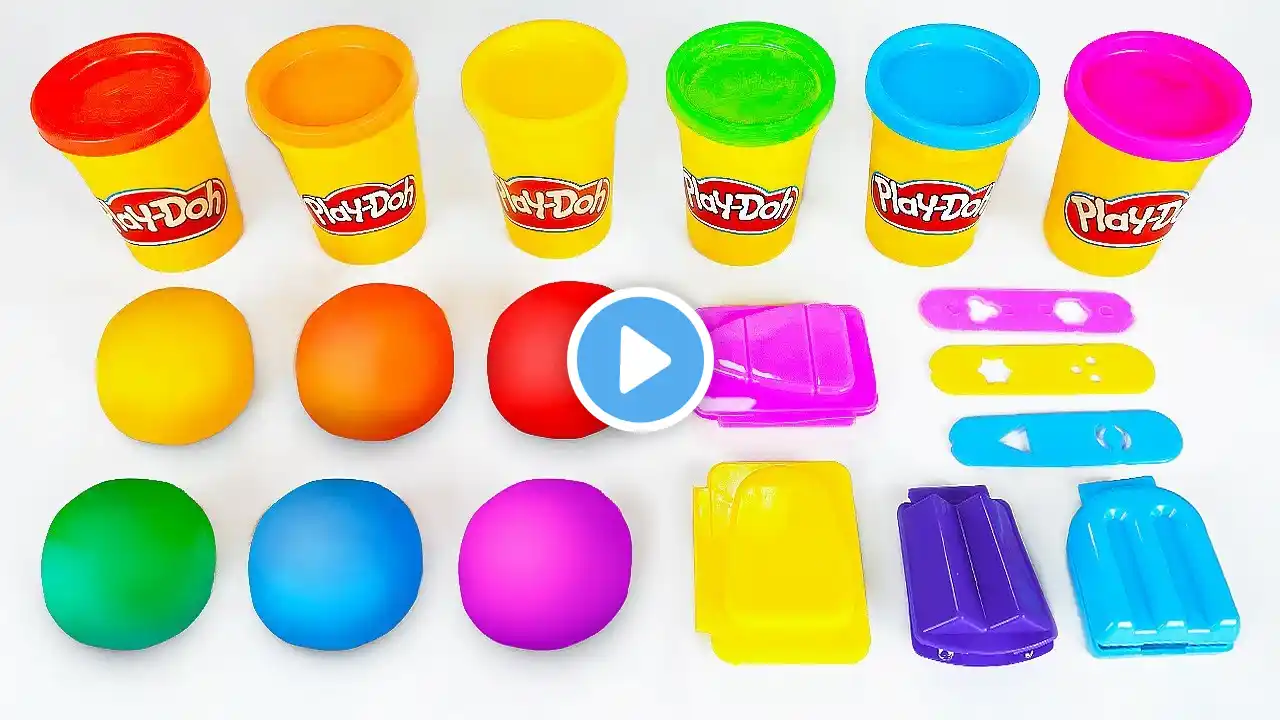
How to make Play-Doh Ice Cream, Fruits and Veggie 2 in 1
How to make Play-Doh Ice Cream, Fruits and Veggie 2 in 1 This is a video about how to use Play-Doh Ice Cream, Fruits and Vegetables Set to make colorful and fresh look Ice Cream, Fruits and Vegetables. Hope you and your kids enjoy this video. Please subscribe our channel. Quote from Wikipedia: Jumpstart the creativity with the classic Play-Doh Fun Factory tool! This set lets kids explore their imaginations and have fun squishing and squeezing Play-Doh colors. To play, simply load the Fun Factory set with a favorite Play-Doh color, choose a shape on 1 of the 2 rails, and press the lever to squeeze out all kinds of silly and fun shapes! Hasbro, Play-Doh and all related properties are trademarks of Hasbro. Includes Fun Factory tool, 2 rails, and 2 cans of Play-Doh Brand Modeling Compound. • Fun Factory tool squeezes out colorful Play-Doh shapes • Load Play-Doh compound and press the lever • Attachable rails create a variety of shapes • Includes 2 cans of Play-Doh Brand Modeling Compound • Ages 3 years and up • Product and colors will vary. • Compound not intended to be eaten. • Notice to Parents: Contains Wheat. Play-Doh is a modeling compound used by young children for art and craft projects at home and in school. Composed of flour, water, salt, boric acid, and mineral oil, the product was first manufactured in Cincinnati, Ohio, United States, as a wallpaper cleaner in the 1930s.[1] The product was reworked and marketed to Cincinnati schools in the mid-1950s. Play-Doh was demonstrated at an educational convention in 1956 and prominent department stores opened retail accounts.[2] Advertisements promoting Play-Doh on influential children's television shows in 1957 furthered the product's sales.[1] Since its launch on the toy market in the mid-1950s, Play-Doh has generated a considerable amount of ancillary merchandise such as The Fun Factory.[3] In 2003, the Toy Industry Association named Play-Doh in its "Century of Toys List". In botany, a fruit is the seed-bearing structure in flowering plants (also known as angiosperms) formed from the ovary after flowering. Fruits are the means by which angiosperms disseminate seeds. Edible fruits, in particular, have propagated with the movements of humans and animals in a symbiotic relationship as a means for seed dispersal and nutrition; in fact, humans and many animals have become dependent on fruits as a source of food.[1] Accordingly, fruits account for a substantial fraction of the world's agricultural output, and some (such as the apple and the pomegranate) have acquired extensive cultural and symbolic meanings. In common language usage, "fruit" normally means the fleshy seed-associated structures of a plant that are sweet or sour, and edible in the raw state, such as apples, bananas, grapes, lemons, oranges, and strawberries. On the other hand, in botanical usage, "fruit" includes many structures that are not commonly called "fruits", such as bean pods, corn kernels, tomatoes, and wheat grains.[2][3] The section of a fungus that produces spores is also called a fruiting body.[4] In everyday usage, a vegetable is any part of a plant that is consumed by humans as food as part of a meal. The term vegetable is somewhat arbitrary, and largely defined through culinary and cultural tradition. It normally excludes other food derived from plants such as fruits, nuts, and cereal grains, but includes seeds such as pulses. The original meaning of the word vegetable, still used in biology, was to describe all types of plant, as in the terms "vegetable kingdom" and "vegetable matter". Originally, vegetables were collected from the wild by hunter-gatherers and entered cultivation in several parts of the world, probably during the period 10,000 BC to 7,000 BC, when a new agricultural way of life developed. At first, plants which grew locally would have been cultivated, but as time went on, trade brought exotic crops from elsewhere to add to domestic types. Nowadays, most vegetables are grown all over the world as climate permits, and crops may be cultivated in protected environments in less suitable locations. China is the largest producer of vegetables and global trade in agricultural products allows consumers to purchase vegetables grown in faraway countries. The scale of production varies from subsistence farmers supplying the needs of their family for food, to agribusinesses with vast acreages of single-product crops. Depending on the type of vegetable concerned, harvesting the crop is followed by grading, storing, processing, and marketing. Vegetables can be eaten either raw or cooked and play an important role in human nutrition, being mostly low in fat and carbohydrates, but high in vitamins, minerals and dietary fiber. Many nutritionists encourage people to consume plenty of fruit and vegetables, five or more portions a day often being recommended.


















